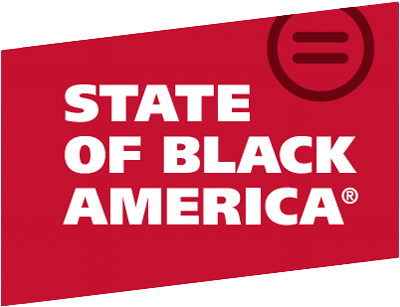Our society is creating and consuming data faster and more than ever before. Ninety percent of today’s data was produced in the last two years. From enabling companies to produce better, cheaper products, to putting banking, transport, and food services at our fingertips, data is transforming our everyday transactions and experiences. Like a watchful neighbor, data knows our comings and goings, who we vote for, when we go for our daily run, and our favorite takeout. What data knows is highly valued. So much so, that data, not oil, is now the world’s most valuable resource, as reported by The Economist magazine. What does this shift mean for society, and how can government leverage data’s value for the benefit of communities of color?
Data for Public Good
Data provides an opportunity for government to be more effective and produce broad value for society. US government data powers the apps that bring us the current weather and help us navigate our commutes. Like the big data companies, Amazon, Facebook, and Google, that have learned to target services to consumers, government is also beginning to use data to provide better, more targeted services for citizens.
When we served in government, we worked to make government more innovative and more open to society. We promoted the potential of data, technology, and innovation to drive social impact, and we led the creation of policies to support community solutions. Less than a decade later, we are seeing the evolution of government innovation to solve local problems, and the key differentiator is data.
Cities are Leading Innovation
Cities are finding themselves at the forefront of applying solutions to complex problems. From climate change to poverty to education, cities are turning to data to find answers and to better communicate with and strengthen communities. In 2017, Hurricanes Harvey and Irma tested the capacity of Houston and Miami to respond to emergencies. Both cities experienced the power of data to help leaders and residents manage through a disaster, from coordinating evacuations and saving lives to directing relief and aid. US cities are embracing digital tools to link citizens to a host of services, such as information to improve maternal health and reduce infant mortality, education resources to improve student outcomes, transit options, and public safety information. San Jose, San Francisco, Detroit, Boston, and Washington, D.C. are among a number of cities that are experimenting with new structures, including innovation offices and dedicated chief officer roles, to make government more responsive to the needs of citizens.
Do No Harm
This is an exciting moment for cities. While early civic innovations are being tested, there is great opportunity to do more to harness digital solutions. At the same time, cities cannot be distracted by the ‘shiny new thing’ when deep-seated problems like structural racism and poverty persist. It is important to note that the rapid growth in the digital economy is also leading to greater income inequality, gentrification, and displacement of long-standing communities. Data and tech alone will not fix these problems. Just applying these tools, without purposeful design that addresses core issues, will not address codified biases. Data has a dark side and a history of its use to persecute and victimize communities of color. Unethical studies, surveillance and monitoring, and privacy breaches are examples of how data has been used against the public. The use of algorithms has revealed how data-driven solutions can perpetuate bias and discriminate against communities, as illustrated by Amazon’s experience in Boston’s Roxbury community, the only neighborhood excluded from Amazon’s same-day delivery in Boston until the public took notice. To truly build data-driven cities that improve outcomes for all, city leaders need to acknowledge data’s risks and limitations, and commit to do no harm. Above all, cities will need to leverage data with intentionality and build trust, especially with communities of color.
New Rules, New Code
Communities are rightfully mistrustful of giving their information away. History shows that data has been used to discriminate against communities, such as credit scores in the US, which further perpetuate biases. To build trust, cities can invite communities of color to participate in solving problems and listen to their key concerns. Cities can also facilitate deeper engagement, including investment in training, such as data, coding, and analysis, to equip communities to design better solutions. Technical skills are critical, but more needs to be done to improve data quality. Limited and wrong data can limit decision making. Cities need to seek better data and invite bottom-up solutions. To collect the right data, cities can shape data collection in response to challenges that communities identify. Increasingly, communities of color are advocating for action research and inclusive data to inform policies. By embracing a co-design approach, cities and communities can change the rules of the game.
To facilitate change, cities will need an inside/outside strategy. To start, they can invest in a new generation of public servants who view City Hall as an exciting place to embed new ideas and engage diverse communities. They also need to invest in digital technologies that re-build trust between citizens and government by providing better services, transparency, and feedback loops. In this new era, communities need to be informed and ready to act. This means actively participating in how digital technologies are built, critically assessing underlying algorithms to ensure they don’t further entrench systems of inequality, and advocating for civic voice and capacity in local decision making.
Conclusion
Data is changing how business gets done. As a society, we have the potential to re-write the rules and create a more level playing field. However, cities and communities need to leverage this moment to create a new relationship, one that values inclusion, civic engagement, and equity. For cities to deliver on the potential of data and technology, they need talent, effective engagement strategies, and ethical approaches to building solutions that work, especially for communities of color. The good news is that the digital era is enabling two-way communication and opportunities to improve service delivery, giving communities avenues to communicate with government and helping government be more responsive. Building the cities of the future—more equitable, efficient, and sustainable places to live where people from all backgrounds can interact with one another—will require giving communities of color a seat at the table, greater transparency, and control of their data, which is increasingly an essential asset in the 21st century.





